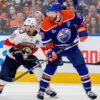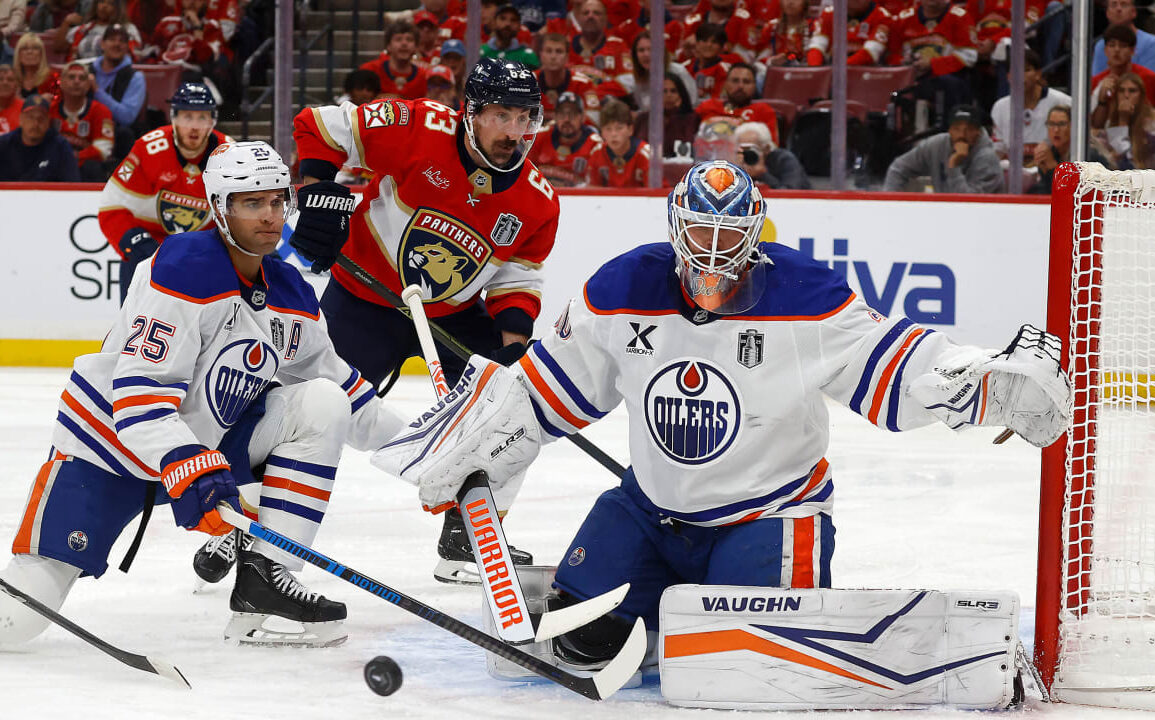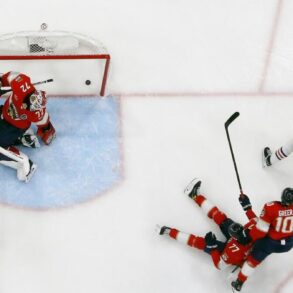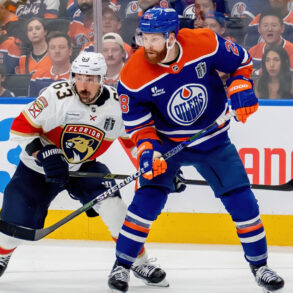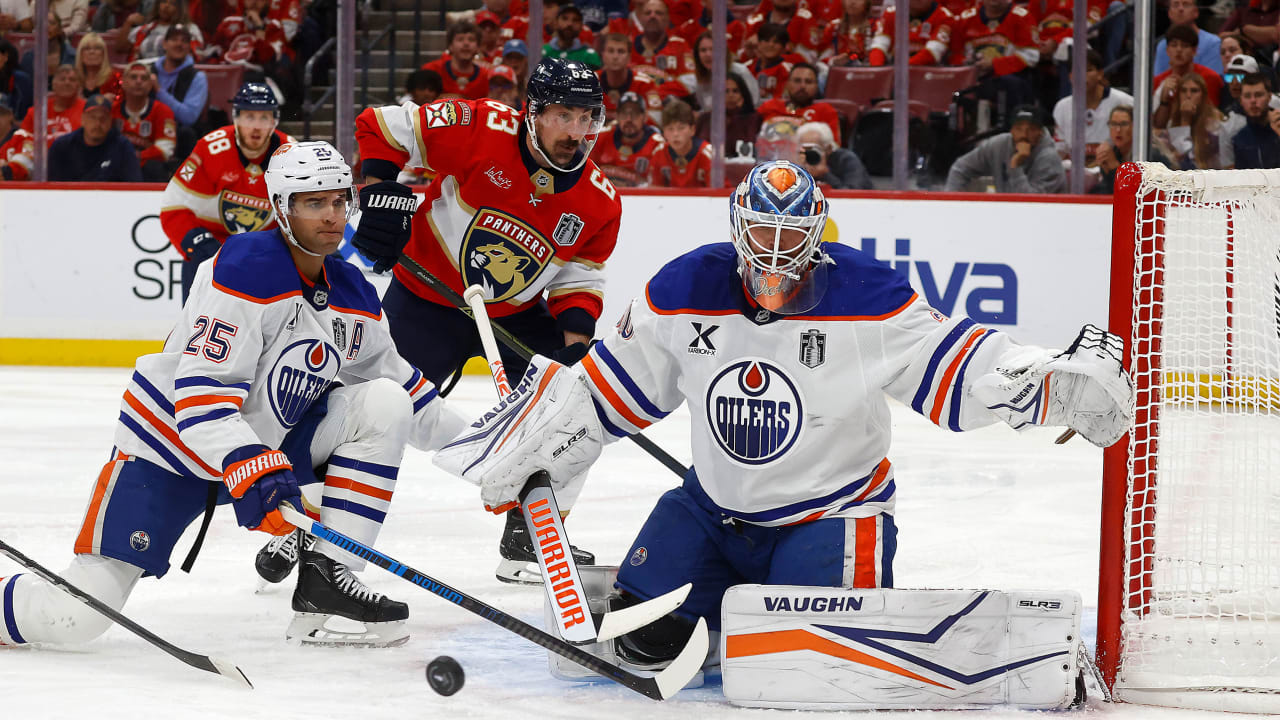
Pickard also took over for Skinner in the third period of Game 1 in the First Round against the Los Angeles Kings and subsequently won the next four starts to eliminate them and stake his claim to the starting job to start the Second Round against the Vegas Golden Knights. He won the first two games of that series on the road before a lower-body injury gave the net back to Skinner to start Game 3.
Pickard’s backup status in the regular season means there were only 85 total goals to look at, but he produced great results behind a team that appears to battle as hard for him defensively as he does for them in the crease.
East-West equals less success: Pickard manages dangerous lateral plays across the middle of the ice well, with his 15 goals (17.6 percent) in regular season well below the tracked average (22.1 percent) for over 8,500 goals tracked for this project since 2017. While these types of east-west plays are typically the hardest for any goalie, Pickard’s strong play-reading skill and skating has allowed him to make momentum-changing saves when facing them, including going right-to-left for an outstanding glove stop on Florida forward Sam Bennett at 6:48 of overtime in Game 4 on Thursday, getting just enough of the one-timer to deflect the puck up and off the crossbar. Pickard has only allowed two goals in the playoffs off passes and plays across the middle of the ice compared to nine for Skinner so far, and five in just four games against the Panthers, so this difference alone has the potential to alter the series if Florida doesn’t adjust tactics. Pickard’s goal results are balanced in both directions but the goals along the ice to his right are a sign of better success attacking in that direction below the hash marks, while right-to-left can produce better results when attacking from higher in the zone.
Traffic jams: Pickard reads and anticipates well, so it’s not shocking to see that taking away his sightlines leads to more goals. More than one-quarter (24) of the 85 goals he gave up in the regular season involved a screen, the Kings added four more with traffic in the first round, and Vegas scored on Alex Pietrangelo‘s low screen shot from the blue line in Game 2 of the second round, all well above the tracked average of 15.1 percent. Screen goals weren’t limited to in-zone plays, either, with five in the regular season and one in the playoffs coming off the rush, often with Oilers defensemen not helping with loose gap control that allowed opponents to use them to hide their release. Part of the in-zone results are physical: at 6-foot-1, Pickard doesn’t cover as much net compared to Skinner at 6-4. He also tends to drift as he drops behind traffic, opening more net and limiting coverage to cut off deflections, which accounted for eight goals in the regular season and two in the first round. Where to shoot also depends on where you shoot from: Pickard uses a high stance to look over traffic when the puck is at the point, so quick low shots like Pietrangelo’s can be effective from distance, but lowers and tends to slide more mid-zone, with elevated shots against the grain accounting for 13 screen goals.
Low blocker on clean looks? The goal chart shows a discrepancy that might suggest shooting high glove side but it’s important to remember those don’t represent a save percentage. Seven of the 10 clean look goals Pickard gave up in the regular season were on the blocker side (four were low shots, just over the pad, and three were high shots) and the Kings scored two of their four clean shot goals high blocker as well. Both were near perfect shots just under the bar, but a tendency to turn and pull back with the blocker and blocker-side shoulder rather than cutting pucks off in front may make blocker side a preferred target. It also limits his access to lower shots just over the pad on that side, and Florida forward Evan Rodrigues already scored on a clean look low-blocker, power-play one-timer in Game 3.
High glove moving or screened: Of the 18 high-glove goals in the regular season, four were screened and 12 involved plays that got Pickard moving, taking advantage of a tendency to drop his glove from a high, fingers-up position in his static stance when he is moving, whether it’s side-to-side on his skates or knees, or on low-high passes from down near or below the goal line, which accounted for 11 goals in the regular season. Of the six high-glove goals in the playoffs, the first two in Game 3 against the Kings were on clean shots, but the third came on a screened deflection, and the last three got him moving side to side, with the glove dropping as he did, including two right to left pushes off his post on sharp-angle passes against Vegas. On clean looks with Pickard set, the numbers favor a lower shot just over the glove-side pad to try and take advantage of that elevated, fingers-up glove position.
This post was originally published on this site be sure to check out more of their content.



